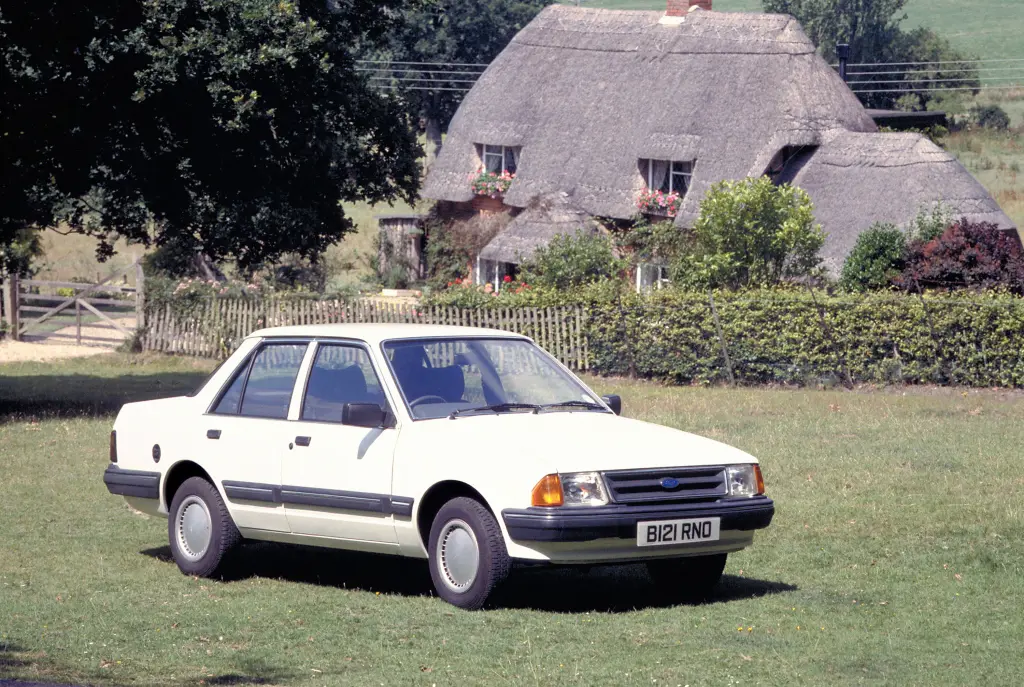DO YOU REMEMBER THE FORD ORION MK. I?
17 July 2023
Some cars take pride in being reassuringly conventional, not least the Orion, a vehicle that only Terry and June might have considered at the cutting edge of automotive fashion. Ford never intended to break new bounds, but it more than fulfilled its role as a saloon to appeal to fleet buyers.
It is easy to forget that Ford of Europe took two major risks in the early 1980s. Firstly, succeeding the Escort Mk. II with a range of three or five-door saloons was an undeniably bold move, and two years later, the Sierra replacing the Cortina was an undeniably challenging prospect. At that time, light-medium and medium-sized hatchbacks were less popular than saloons.

In addition, management at Dagenham was more than aware that Vauxhall offered the Cavalier II with both body styles. Nor could they have ignored the fact that in 1979 Talbot sold fewer than 30,000 Alpines in the UK as compared with over 130,00 Cortina Mk. IVs. The solution was a booted version of the Sierra, but the Sapphire would not reach the market until 1987.
So, in the interim, there was Project Apollo that Ford introduced as the Orion in September 1983. To establish the new model as a separate product line rather than a booted Escort, the advertising agency Ogilvy & Mather gave it an up-market image. https://www.youtube.com/watch?v=UAOqPXXlbjU.
The brochure’s claim that here was “a major landmark in the company’s history” was a mild exaggeration, but the Orion did seem a viable competitor to the Triumph Acclaim.
The Orion was only available in four-door form and, at nine inches longer than the Escort, offered a larger boot and more space for rear-seat passengers. Dagenham further cultivated an air of mild distinction by initially commencing the line-up with the GL, rather than the Popular trim level, and only offering 1.3 and 1.6-litre engines.
When Motor tested an early Orion 1.6 GL, the project price of £6,200 meant it was slightly more expensive than the flagship Acclaim CD. They concluded that while a premium of circa £400 over the equivalent Escort was quite considerable, the Orion was “a highly persuasive proposition” compared with the Sierra and the Cavalier.
In March 1986, Ford introduced a Mk II version parallel with the Escort Mk. IV. By 1987 it was the UK’s best-selling car, an achievement it repeated in 1988. The autumn of that year marked a revival of the 1600E name for the latest Orion flagship. On paper, the combination of the 1.6-litre fuel-injected engine with a leather trimmed-interior was highly appealing, even if at £12,500, it cost £1,500 more than the 1.6i Ghia.
However, the 1600E promoted one of Car’s most notorious road tests, for in 1989, the late Russell Bulgin compared it with the Vauxhall Astra Belmont CDi - and a second-hand Vanden Plas 1500. He memorably concluded the coachbuilder version of the Austin Allegro “really does combine all the cultural values of taking afternoon tea at Stow-on-the-Wold in one garage-sized package”. But as for the Orion 1600E, “this is the most cynically conceived mass-market car available in Britain today”. The Vauxhall was Bulgin’s choice, not least because of its “innovative use of velour to cover virtually every surface within the car”.
The Orion Mk. III debuted in late 1990 alongside the Escort Mk .V, and today it is quite unusual to see an early version on the road. Any example now looks as fascinatingly dated as youths with unfortunate Andrew Ridgely haircuts posing in a provincial Wimpy Bar. And even Mr. Bulgin commented vaguely favourably on its “spectacularly decadent leathered wheel”.
